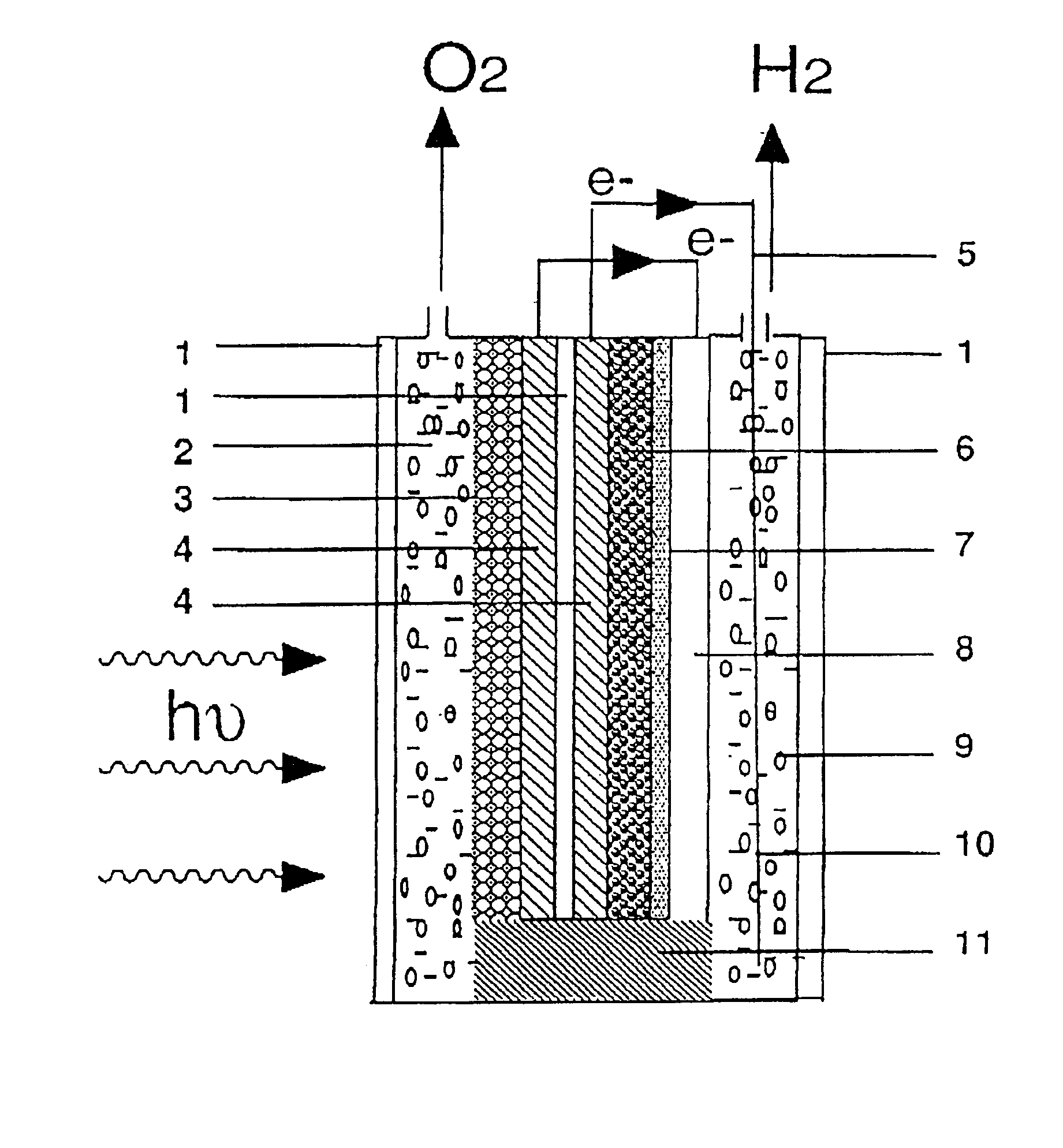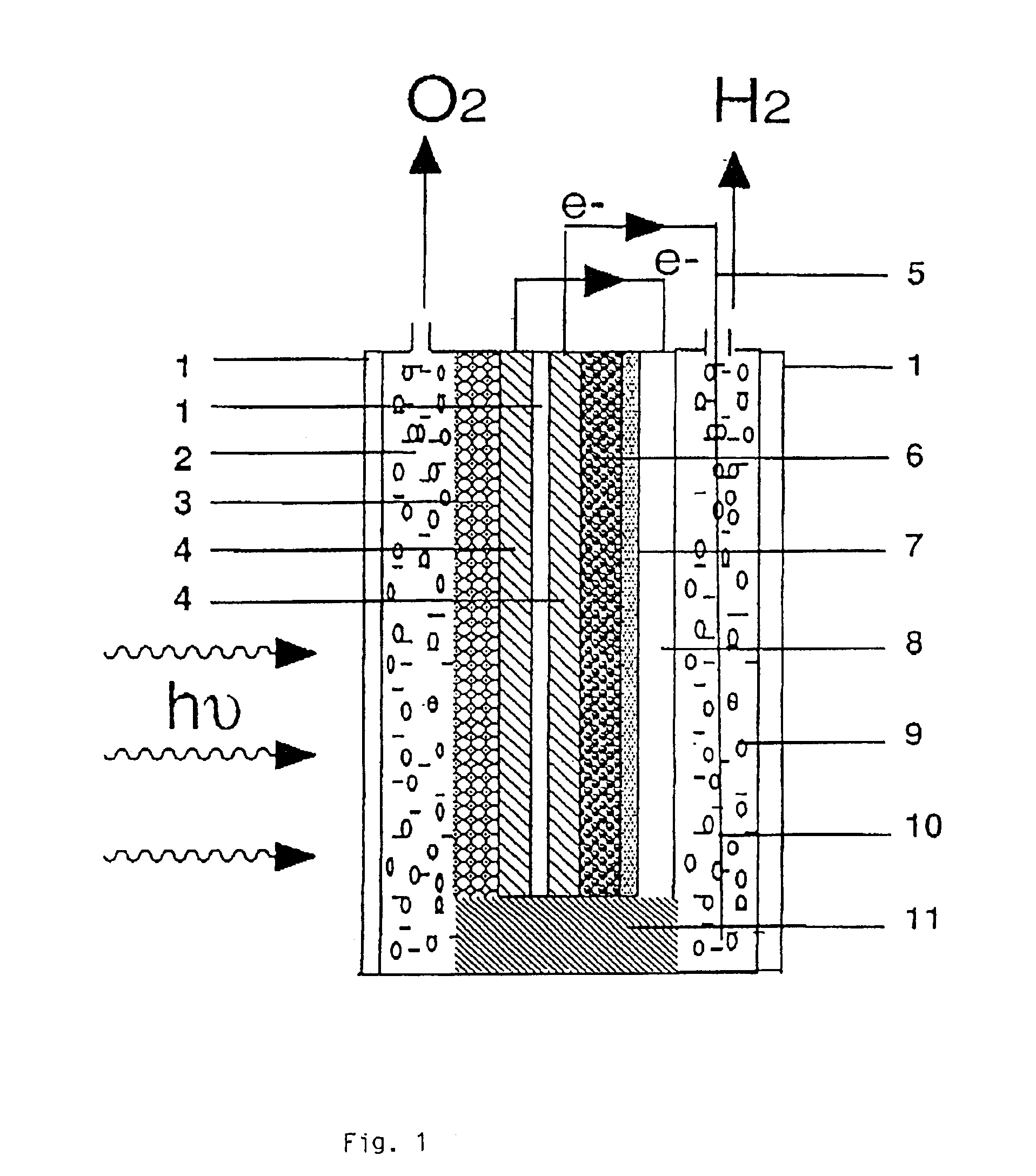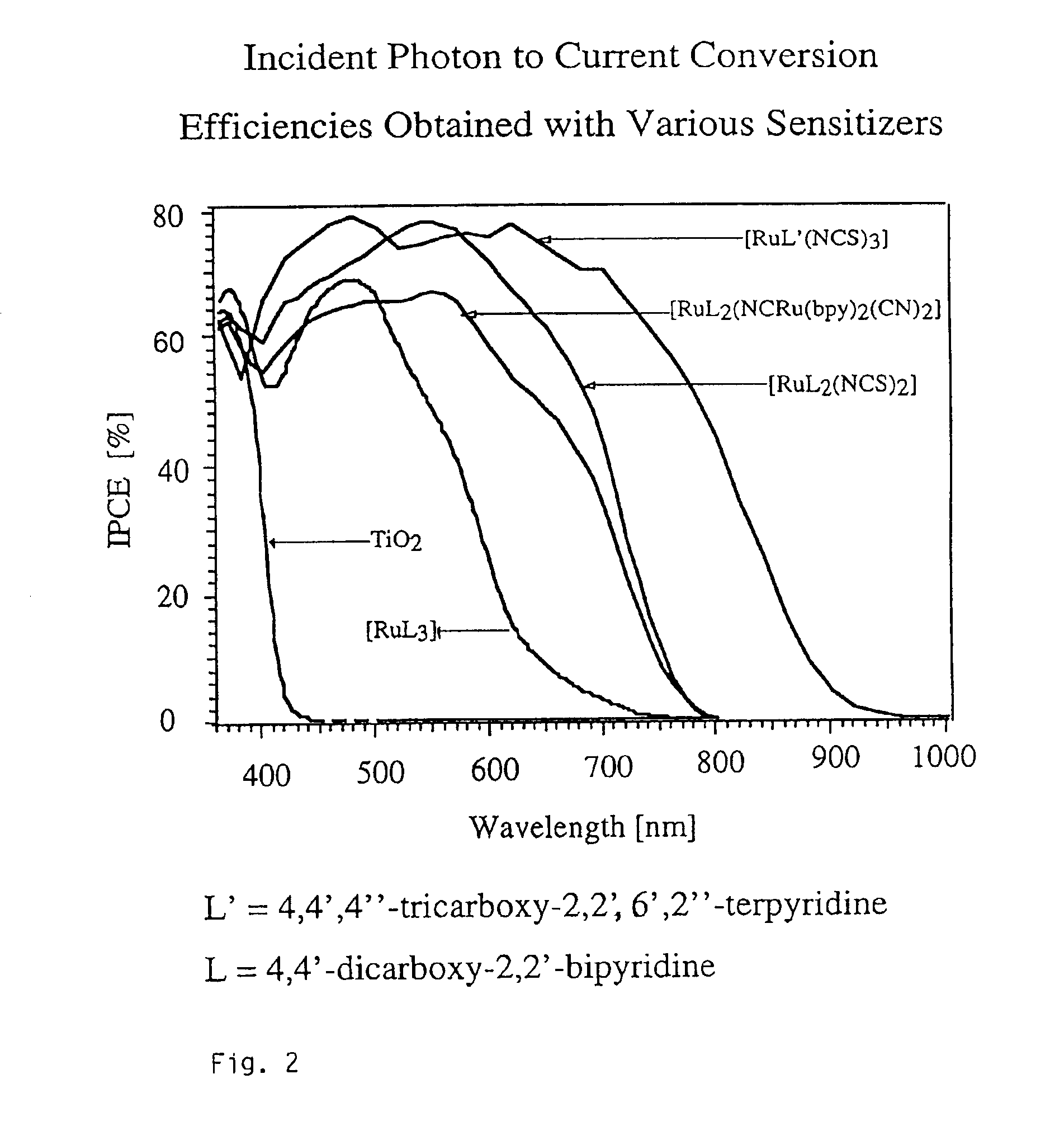Tandem cell for water cleavage by visible light
a technology of visible light and water cleavage, which is applied in the field of photoelectrochemical systems, can solve the problems of unsuitable systems for practical applications and high efficiency using very expensive single crystal semiconductor materials
- Summary
- Abstract
- Description
- Claims
- Application Information
AI Technical Summary
Benefits of technology
Problems solved by technology
Method used
Image
Examples
working example
[0015]The preparation of transparent mesoporous WO3 films of a few micron thickness has been achieved via a sol-gel type process. A colloidal WO3 precursor solution was prepared first and after mixing with polyvinyl alcohol, films were deposited on a conducting glass (Nippon Sheet Glass, 10 ohm / o, fluorine-doped SnO2 glass (TCO)) surface. In order to supply the bias necessary to reach the plateau photocurrent, two in series connected sensitized mesoporous TiO2 injection cells were placed under the transparent WO3 film.
[0016]This configuration reached a photocurrent of 3.5 mA / cm2 for hydrogen generation in simulated AM 1.5 sunlight. This corresponds to an overall solar to chemical conversion efficiency of 5% for light-induced water cleavage by AM 1.5 standard sunlight.
[0017]This example illustrates the successful operation of the tandem device which is an object of the present invention. It is based on two superimposed photocells having complementary light absorption in the visible a...
PUM
| Property | Measurement | Unit |
|---|---|---|
| thickness | aaaaa | aaaaa |
| thickness | aaaaa | aaaaa |
| thickness | aaaaa | aaaaa |
Abstract
Description
Claims
Application Information
 Login to View More
Login to View More - R&D
- Intellectual Property
- Life Sciences
- Materials
- Tech Scout
- Unparalleled Data Quality
- Higher Quality Content
- 60% Fewer Hallucinations
Browse by: Latest US Patents, China's latest patents, Technical Efficacy Thesaurus, Application Domain, Technology Topic, Popular Technical Reports.
© 2025 PatSnap. All rights reserved.Legal|Privacy policy|Modern Slavery Act Transparency Statement|Sitemap|About US| Contact US: help@patsnap.com



